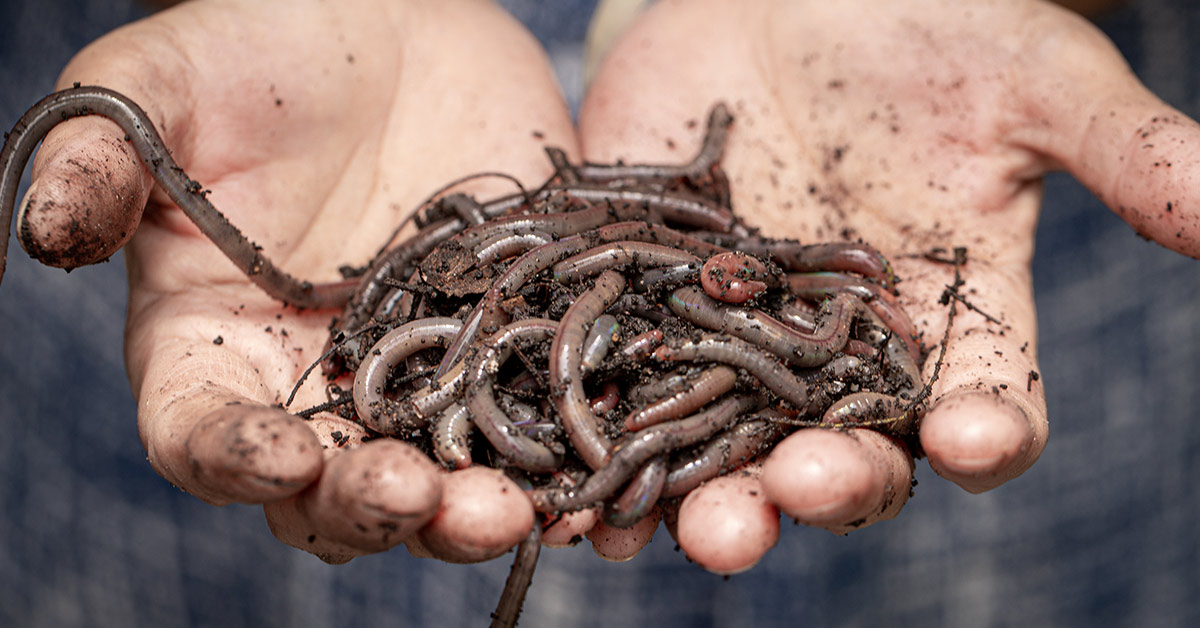Most of us grow up learning that worms are good for the soil and are welcomed guests in a garden. The truth, at least for parts of North America, could be further from that. There is one worm, in particular, however, that is the worst of them all. This is a worm with a white band around its body. If you see these jumping worms, this is what you should do. (1)
What To Do If You See Jumping Worms With A White Band And Why
In more than a dozen states in the Eastern and Midwest parts of America, there is a worm that can easily be spotted wriggling around in the topsoil of most gardens. You can often see them, too, out on the sidewalk after a rainfall. This worm with a white band, however, is not native to not only this part of the country but this continent altogether. This is the highly invasive jumping worm native to Korea and Japan, and contrary to popular belief, it is doing nothing good for the environment. (2)
This type of jumping earthworm feeds on various things in the topsoil of forests and gardens. When finished, the soil they leave behind is loose and granular, and void of nearly all nutrients for plant life. They stunt the growth of trees and plants and even delay the reproduction cycle of new ones.
How Did These Jumping Worms Get Here?
These worms aren’t a new phenomenon – experts believe they likely arrived here sometime in the 19th century when humans started importing different plants from different places. These worms are asexual, meaning that they can easily and quickly grow their population. Today, you can find them in:
- Wisconsin, Missouri
- Illinois
- Iowa
- Minnesota
- Nebraska
- Ohio
- Texas
- Louisiana
- Indiana
- Kansas
- Indiana
- Kentucky
- Tennessee
- Oklahoma
They can even be found as far north as the Hudson’s Bay in Canada.
But Wait… Aren’t Worms A Good Thing?
As with anything, if they are a native species then likely yes. These, however, are not native to North America. While yes, they do an excellent job at breaking down organic matter and breaking up compact soil, what they do to the topsoil in these regions is not good for the plants that grow there. In agriculture, they make tunnels through the ground that make it much easier for nutrients and pesticides to leak from crop fields and into waterways. They allow more carbon dioxide and nitrous oxide to escape into the atmosphere, aka greenhouse gases.
These worms are also not the forests’ friends. They eat the important “duff” – the dead leaves and foliage decomposing on the forest floor. This takes away the home of insects, amphibians, birds, and native flowers. The nutrients that are released from this act are done so too quickly for the plants to use them properly. It takes longer for forest regrowth, and if this continues, slowly the plants, insects, and animal species (including larger animals like deer) will begin to vanish.
“Plants need that layer in order to germinate,” says Brad Herrick, an ecologist at the University of Wisconsin to the Chicago Tribune, “and trees need it in order to survive.”
In case you’re wondering, they’re killing the flowers and vegetables in your garden, too.
What You Can Do About It
Currently, there is no nationwide solution to this problem. Because they can lay thousands of eggs at a time and the eggs can survive winter, they are very hard to control. You, however, can help at least with your own personal garden.
First of all, you can “lift” worms out of the soil by pouring a mixture of mustard powder and water over your soil. It is highly irritating to the worm’s skin, so they will begin wriggling and almost jumping out of the soil. From there, you need to kill them. The best way to do this is to put them into a ziplock bag and leave them in the sun for 10 minutes. Then, throw them in the garbage – do not put them back into the soil.
Don’t purchase these worms for fishing bait or garden projects. Only purchase topsoil that has been heated to over 104 degrees Fahrenheit. This is high enough to kill any egg casings that may be found in that soil. (3) Hopefully soon researchers will figure out how to fully eradicate these worms from the ecosystems in which they don’t belong.
Keep Reading: Why Are Worms Coming Out of Strawberries in This Viral Video? An Expert Explains
Sources
- “Highly Invasive Jumping Worms Have Spread to 15 States.” Smithsonian Mag. Elizabeth Gamillo. April 22, 2021
- “CANCEL EARTHWORMS.” The Atlantic. Julia Rosen. January 23, 2020.
- “Jumping worms.” Extension

